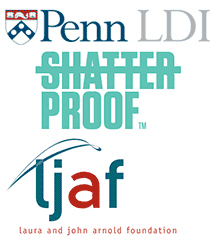News
LDI Awarded Grant to Study Payment Policies for Opioid Use Disorder
A Penn LDI-Shatterproof Collaboration
The University of Pennsylvania’s Leonard Davis Institute of Health Economics (LDI) has received a grant from the Laura and John Arnold Foundation (LJAF), in partnership with Shatterproof, to study the logistics and policies related to the public and private insurance industry’s coverage of opioid use disorder treatment.

LDI is Penn’s hub of health services research collaboration, with many of its senior fellows engaged in a wide range of studies related to addressing the opioid epidemic. Shatterproof is a non-profit advocacy organization whose Substance Use Disorder Treatment Task Force is working to create a national universal standard of care for opioid use disorder. LJAF funds research in a number of areas, including public health, to help support evidence-based public policy.
Sixteen insurers
Last November Shatterproof announced it has signed 16 major health insurers to an agreement endorsing the National Principles of Care for Substance Use Disorder Treatment, which are based on evidence presented in the 2016 Surgeon General’s Report on Alcohol, Drugs, and Health.
The new award from LJAF is a six-month project focused on establishing the groundwork for the Shatterproof Task Force’s larger effort to transform the country’s addiction treatment system with payer policies and incentives that foster high-quality evidence-based treatment practices.

Monitoring policy changes
“The plan is to develop an assessment strategy that could be applied systematically across cooperating private payers and state Medicaid directors,” said LDI Executive Director Daniel Polsky, PhD, who is the research project’s primary investigator. “The goal is to eventually create a system that could monitor changes in policies over time, evaluate those policies, and track progress in adopting best practices.”
“This project will inform our work with payers to implement changes that increase availability of, and incentivize, higher quality addiction treatment,” said Samantha Arsenault, Director of National Treatment Quality Initiatives at Shatterproof. “We look forward to working with LDI to understand and track how insurance providers are optimizing efforts to curb the opioid crisis.”
As the opioid epidemic has evolved into a national crisis, insurers have established widely varying coverage policies for substance use treatment at the same time researchers and advocates have documented that treatment remains beyond the reach of large numbers of people who need it most.

Payment models
Insurers operate according to several categories of strategy including benefit design, coverage, utilization management, reimbursement and alternative payment models that directly affect what treatments are available and to whom.
The current body of evidence-based treatment strategies for opioid use disorder include three medications approved by the Food and Drug Administration — buprenorphine, methadone, and naltrexone. But researchers have found that these effective medications are often not used in mainstream healthcare and specialty addiction treatment facilities.
For instance, roughly a third of these facilities offer even one of the medications and only two percent offer all three. Even then, the delivery of these medicinal therapies was found to often be inadequate and of poor quality.
115 deaths a day
According to the Substance Abuse and Mental Health Services Administration, over 2 million Americans are addicted to opioids, including prescription and illicit versions. The National Institute on Drug Abuse estimates that 115 of those people die every day — or about five deaths every hour around the clock.